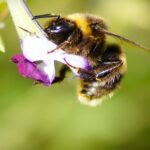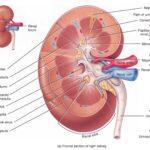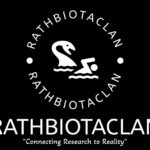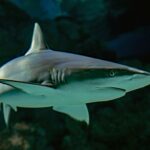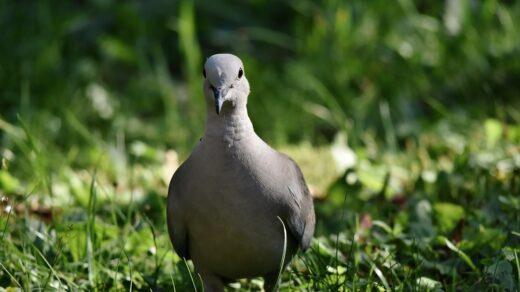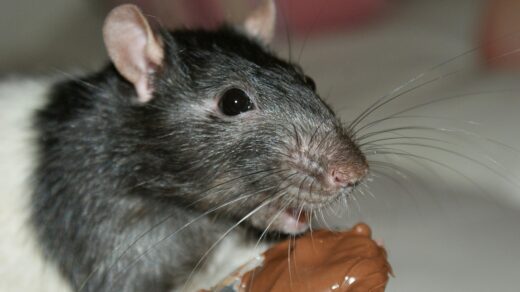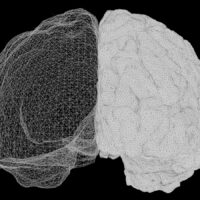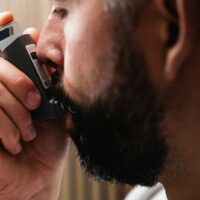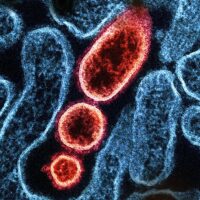COCKROACH
Cockroach is commonly called black beetle .It is a common arthropod. The cockroaches are the most familiar nocturnal omnivore insects. They the pests of food industries, hotels, kitchen warehouses, etc. The word cockroach is derived from the Spanish ‘Cucaracha’. Periplaneta americana was originally named Blatta american by Linnaeus but finally the generic name Periplaneta was assigned to it by Burmeister 1838. Its original home is supposed to be tropical Africa and not America, as previously believed. But today, it exists in all parts of the world. It has become well established almost throughout India. The two common cockroaches found in India are Periplaneta americana and Blatta orientalis (black beetle). The following account mainly deals with P. americana.
MORPHOLOGY
It includes the following features:
1. Shape, Size and Colour
The body is narrow, elongated, bilaterally symmetrical and flattened dorso-ventrally. The adult measures from 34-53 mm in length and 8 to 10 mm in width. The colour is shining reddish-brown with a paler yellow area around the edge of pronotum and two dark patches over it.
2. Body Wall and Exoskeleton
Body wall or integument consists of following parts:
1. Cuticle (exoskeleton)
Entire body including appendages is covered externally by a thick, brown coloured, non-living, hard and chitinous cuticle which forms the exoskeleton. It is secreted by the under lying hypodermis. Exoskeleton is principally made of chitin, a horny substance, chemically polysaccharide (C32H54N4O21).
3. Hypodermis
Hypodermis (or epidermis) lies beneath cuticle which it secretes. It contains :
(a) Glands.
Dermal hypodermis secrete hormones. glands found pheromones and in some
(b) Oenocytes.
These cells secrete wax or lipids and epicuticle during moulting.
(c) Trichogen cells.
These cells of hypodermis secrete movable and hair like sensory setae projecting above the surface of cuticle. They also control movement of the setae.
4.Body Divisions
The body of cockroach is distinctly segmented and comprises of three regions or tagmata-head. thorax and abdomen. Segmentation is clearly seen in the body of cockroach. In embryonic stage the body has 20 segments-head contains 6, thorax 3 and abdomen 11 segments. The adult cockroach has 19 segments having 10 segments in abdomen, 3 in thorax but the 6 head segments are fused. 1. Head. The head is small and triangular and attached to the thorax anteriorly. It is held at right angles to the long axis of the body. It is formed by the fusion of six embryonic segments.
(a) Exoskeleton of head
The whole head is covered by a number of plates constituting its exoskeleton or head capsule.
(b) Appendages of heads
On the head close to each eye arises a long, slender and segmented antenna. A head inclined at right angle to long axis of body and with mouth parts directe downwards is called hypognathus. The cut and chewing or mandibulate mouth parts com of a labrum, a pair of mandibles, a pair of fies maxillae, fused second maxillae or labium and a hypopharynx .
(c) Neck
Head is attached to thorax by short and narrow neck (cervicum) which supported by 4 small chitinous plates, 2 don and 2 ventral. Head can be moved by tech muscles in different directions.
5. Thorax
The thorax comprises of three segments prothorax, mesothorax metathorax. Each thoracic segment is covered by four chitinous plates. One dorsal plate tergun (notum), one ventral plate sternum and two lateral plates called pleura or pleurites. Pronotum covers anteriorly part of head and posteriorly it coven mesonotum.
(a) Walking legs
Each thoracic segment bears a pair of nine jointed walking legs.
Each walking leg consists of-
(i) a short, broad coxa,
(ii) triangular, a short, rod-like trochanter
(iii) a long, stout, spiny femur,
(iv) a spiny tibia which represents the longest segment,
(v) a long tarsus. The tarsus is made up of five joints or tarsomeres.
Each of the first four tarsomeres bears a soft pad or plantula while the last, called pre-tarsus, ends in two hooked claws, in between which is a hairy porous pad, called the arolium. Plantulae and arolium prevent slipping on a smooth surface during locomotion. The legs are used for running and climbing .
(b) Wings
Cockroach has 2 pairs of wings attached on antero-lateral margin of mesothorax and metathorax.
(i) Elytra or tegmina
These are first pair of wings which are heavily sclerotised. The forewings are attached with mesothorax. They are opaque,dark and leathery in texture and cover the hind wing, when at rest.
(ii) Second pair of wings
They are thin transparent, membranous attached with metathorax.
(c) Flight muscles
These are weak in cockroach hence it cannot fly for long distance. Cockroach is a fast runner but a poor flier insect. It can run at a speed of 130 cm/sec.
6. Abdomen
The abdomen of adult cockroach has 10 segments. Abdomen is broader than thorax. Exoskeleton of abdomen segments consists of one dorsal tergum, a ventral sternum and two lateral pleural chitinous plates.
Body cavity
The main body cavity is haemocoel present between body wall and alimentary canal. It is filled with blood called haemolymph. Coelom is reduced and is represented by the cavity of reproductive organs.
Fat body
The fat body, filling up the greater part of the haemocoel, is a lobed white tissue and consists of a number of different types of cells. It is mesodermal in origin and made of number of lobes.
ANATOMY OF COCKROACH
It includes following systems of body:
Digestive System
It comprises of mouth parts, alimentary canal and salivary glands.
Alimentary Canal
It is a partly coiled tube
1. Foregut (stomodaeum)
It include following parts:
(a) Mouth cavity
The small space surrounded by mouth parts is the mouth cavity or preoral chamber. Its region, in front of the hypopharynx, is called the cibariu ofd the hinder region salivarium. The food crushed and acted upon by the saliva in the mouth cavity.
(b) Mouth
True mouth is a small opening the base of preoral cavity.
(c) Pharynx
Mouth leads into a short and tubular chamber called pharynx having folded cuticular lining.
(d) Oesophagus
From pharynx arises a long straight narrow and laterally compressed tube, the oesophagus. It passes through the nerve collar. runs through the neck and enters in thorax to merge with crop.
(e) Crop
It is a large, thin-walled, pear-shaped sac, which extends well up to the third or fourth abdominal segment. It is the largest part of foregut. Its internal epithelial and cuticular lining is very much folded. It outer repaired by a network of tracheae. Crop serves as a reservoir for storing food.
(f) Gizzard
Crop leads behind into a small, cone-shaped, muscular and thick-walled chamber,the gizzard or proventriculus ,which marks the end of foregut.It consists of two parts,an anterior armarium and a posterior stomodaeal valve.
2. Midgut (Mesenteron)
Midgut is the short and narrow tube like middle part of alimentary canal also known as ventriculus or mesenteron. It is internally lined by glandular epithelium and arrepresents the true stomach serving mainly for digestion and absorption.
Hepatic caeca
Opening into the anterior end of midgut are 7-8 short, narrow, blindly ending hollow tubes, called enteric or hepatic caеса. These are internally lined by epithelium and secrete digestive enzymes.
In midgut the internal lining is made of endodermal, columnar, glandular cells. These cells form many small folds as villi. A thin, transparent peritrophic membrane covers the inner margin of cells in midgut. This peritrophic membrane is secreted by the anterior end of mesenteron called cardia and it is permeable to enzymes. It protects the soft wall of mesenteron from hard food substances. It does not hinder digestion and absorption of food. Digestion completes in mesenteron and absorption of digested food occurs in this part.
3. Hindgut (proctodaeum)
The hindgut is divided into three regions:
(a) Ileum
Ileum is a narrow and short tube and its posterior end is characterised by the possession of six tiny triangular lobes internally, bearing spicules and acting as a sphincter.
(b) Colon
Colon is long and wide and has an irregular shape.
(c) Rectum
Rectum is an oval sac and has six rectal papillae.
The lining of the hind gut, as in foregut, is cuticular but is more permeable to water than that of foregut.
Salivary Apparatus
It includes:
1. Salivary glands
Lying in thorax, on either dorso-lateral side of the oesophagus, is a pair of bipartite, diffuse and whitish salivary glands.Each gland consists of several secreting lobules or acini in grape-like clusters and connected together by fine tubules (Fig. 9).
2. Efferent salivary duct
The ducts from the two salivary gland unite with each other forming a common salivary duct, that opens at the base of the hypopharynx.
Nutrition
(a) Food
Cockroach is omnivorous, feeding on any kind of animal or vegetable matter, including wood, bookbindings, cloth, leather, paper, pastes, glues, hair, and even its own cast cuticle. It usually feeds at night.
(b) Feeding
Food is searched by the sweeping antennae and seized by the forelegs, labrum and labium.
(c) Digestion
In the salivarium of the mouth cavity the crushed food is acted upon by the saliva whose mucoid substance lubricates the food and the enzyme zymase hydrolyses the starch. Most of the digestion occurs in crop and completes in mid gut by the saliva and the digestive secretions.
(d) Egestion
The undigested food is then passed into the ileum from where it is discharged into the colon. In rectum, the rectal pads absorb water and the faeces is eliminated to outside through anus as dry pellets.
Circulatory System
Cockroach has an open or lacunar circulatory system as the blood (haemolymph) flows freely within the body cavity or the haemocoel.
1. Haemocoel
The body cavity of cockroach is called haemocoel (Gr., haima = blood + koila cavity), as it is filled with haemolymph.
(a) Diaphragms
Haemocoel is partitioned by a dorsal and a ventral diaphragm into three sinuses or blood filled chambers. The diaphragms are provided with pores or fenestrae. The ventral diaphragm also extends as septa into the legs. In each leg the septum divides its cavity into two sinuses, one for the outward and the other for inward flow of blood.
(b) Sinuses
The three sinuses are –
(i) the dorsal pericardial sinus, containing the dorsal blood vessel or heart
(ii) the middle perivisceral sinus, containing the gut
(iii) the ventral perineural or sternal sinus, containing the nerve cord.
(c) Alary muscles
In the pericardial sinus are present 12 paired fan-shaped (triangular) alary muscles, one pair in each segment, on either side of the heart. The apices of these muscles are attached to the terga and their broad bases to the dorsal diaphragm.
2. Heart
Situated in the dorsal pericardial sinus and extending into the thoracic and abdominal segments, is the dorsal blood vessel or the heart. It is a long narrow tube with the anterior end open and the posterior end closed. It consists of 13 funnel-shaped chambers or segments, each in communication by a valvular opening with the one in front of it. The heart of cockroach appears to be beaded, tubular, and pulsatile. The pulsation rate of heart is 49 timesu minute. It is neurogenic heart. The hinder end of each chamber has a pair of minute lateral openings, the ostia.
3. Haemolymph
The haemolymph or blood of cockroach consists of a clear colourless plasma rich in amino acids, uric acid, and numerous different types of cells, called the haemocytes.
4. Blood circulation
Blood or haemolymph circulates due to contractile activity of the heart brought about by the contraction and relaxation of its muscular walls, assisted by the paired fan-shaped alary muscles.
Respiratory System
The respiratory organs of cockroach consist of trachea, tracheoles and spiracles. The well developed respiratory system compensates ill developed circulatory system like that of any other insect.
1. Tracheae
A network of branched closed tubes, called tracheae lies within the haemocoel. There are three pairs of large, parallel, longitudinal tracheal trunks one dorsal, one ventral and one lateral in position. These are connected together by transverse commissures.
Tracheae are formed as invaginations of the integument and hence they are made of outer epithelial wall and an inner cuticle. The cuticular lining is spirally thickened forming the intima or taenidia which prevents the tracheal tubes from collapsing. When cockroach is dissected in water, tracheae filled with air, present a glistening appearance.
2. Spiracles
The main tracheal trunks communicate with the exterior through 10 pairs of openings termed spiracles or stigmata. Two pairs of spiracles are located in the thorax, one between pro- and and mesothorax and the other between meso- and metathorax. Eight pairs of spiracles are abdominal, one pair in each of the first eight abdominal segments.
3. Tracheoles
The ultimate finer branches of tracheae are called the tracheoles having a diameter of one micron. They pass through tracheole cell and remain in contact with all the individual cells. Their walls are very thin, devoid of spiral cuticular thickening but lined with trachein protein (Fig. 12).
The elaborate network of tracheae, innervating all the tissues of the body, serves to carry oxygen directly to all the body parts. It, thus, well compensates for the unability of haemolymph to transport oxygen due to the absence of a respiratory pigment.
Gaseous exchange
Alternate contraction and relaxation of the abdominal muscles (tergo-sternal muscles) cause rhythmic contraction and expansion of the abdomen. Such movements cause change in the diameter of tracheae and force air in and out of the tracheae through the spiracles. The first and third pairs of spiracles always remain open while the remaining eight pairs open only during inspiration and close during expiration. Oxygen reaches the tissues by diffusion through the walls of the tracheoles and brings about oxidation of energy-rich molecules with the release of energy and production of CO2 and water. As CO₂ diffuses more readily than oxygen, it is thought that it is diffused out through the tracheae as well as integument of the body.
Excretory System
Excretory system of cockroach regulates amount of nitrogenous material, inorganic salts and water in the haemolymph. As a result of protein metabolism, nitrogen is produced in excess which is excreted as uric acid .The main structures that play the role in excretion
1. Malpighian tubules
These are attached to the alimentary canal at the anterior end of the hind gut and are fine, long, unbranched, yellowin and blind tubules lying freely in the haemolymph These are 60-150 in number and are arranged 6-8 bundles .
A Malpighian tubule has two functional parts Glandular cells of the distal secretory part extract nitrogenous wastes (mostly in the form of salts of uric acid, e.g. potassium urate) and water from the haemolyph and pass them into the lumes where they form a solution called urine. The urine flows towards the proximal absorptive part of the tubule which absorbs certain salts (such potassium bicarbonate) and some water resulting in precipitation of uric acid. The uric acid moves ell into the ileum by gentle peristaltic waves. More water is absorbed in the colon and rectum that more or less solid uric acid is eliminated with faeces. In Periplaneta Malpighian tubules have been shown to contain intracellular enzyme also .
2. Fat body
It is a lobed white tissue filled in greater part of haemocoel. Fat body cells are Gard of different types but urate cells are excretory in in nature. Urate cells store uric acid and urate gang granules. This mode of excretion is called storage excretion.
3. Uricose glands
The mushroom gland of the male cockroach possesses long, blind tubules at its periphery. These are called the uricose glands or utriculi majores. These tubules store prove uric acid and discharge it over the spermatophore gang during copulation. They thus serve as ‘storage excretory organs’ during mating and as “active excretory organs” during copulation.
4. Cuticle
The cuticle also acts as a site for excretion where the nitrogenous waste material is deposited. It is then eliminated with the shedding of the cuticle at each moult.


